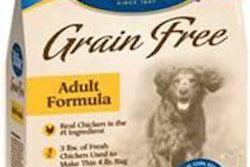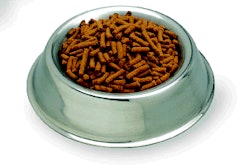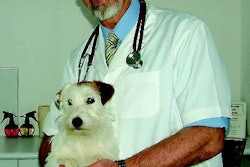Is feeding pets raw foods too risky? On the other hand, is feeding typical commercial petfoods too risky? Following are both sides of this timely debate.
Feeding pets raw ground beef might not be the best idea, according to Robert Backus, assistant professor at the University of Missouri, at Columbia ( AllAboutFeed.net , February 19, 2007). "We are experiencing a trend in the US where pet owners are feeding their pets raw meat because they think it is healthier, but that couldn't be further from the truth," says Backus, director of the Nestlé Purina Endowed Small Animal Nutrition Program.
"Feeding your pet raw meat puts the safety of not only the pet in danger, but also the household," asserts Backus. Harmful bacteria, and other microbes and parasites, may live on raw meat, which is why he urges pet owners to be careful about how they handle it.
Additionally, says Backus, raw meat can affect the pet's health. Animals that consume cooked or uncooked bones can experience tears anywhere along their digestive tracts from their mouths to their intestines. "Petfoods offer a safe alternative to raw meat diets," concludes Backus.
FDA warning
In a February 13 press release, the US Food and Drug Administration (FDA) warns consumers not to purchase, or use, Wild Kitty Cat Food due to the presence of Salmonella . During routine monitoring activities, FDA collected and analyzed a sample of frozen raw Wild Kitty Cat Food and detected Salmonella in the product. Cats and other pets consuming this food may become infected with Salmonella . People can also become infected with Salmonella if they handle or ingest this cat food, touch pets that consumed the food or touch any surfaces that came into contact with the food or pets, according to the release.
In its response to the FDA warning, the Wild Kitty Cat Food company notes, "Since there is no 'kill' step (cooking or irradiation) in the production of any raw meat petfood, and none required by FDA or USDA, the consumer and pet will always have some risk of exposure to foodborne pathogens." The response goes on to say, "We believe our extremely knowledgeable customers think the benefit of a raw diet outweighs the risk, are aware of this risk and follow the FDA-mandated sanitation and handling guidelines that are on the container of our cat food."
The raw side
"A properly formulated raw diet is the most complete and balanced diet possible," contends Dr. Ian Billinghurst, "because it supplies all essential nutrients that we know and do not know about." He notes a raw diet has:
- Appropriate levels of sodium and potassium.
- The evolutionary form and balance of calcium and phosphorus.
- Enzymes and probiotics.
- Biologically appropriate antioxidants and other protective nutrients.
- No artificial chemicals, such as colorings, flavorings or preservatives.
- No added sugar, excessive salt, grains or fillers.
- No heat processing.
Says Billinghurst, "High-carbohydrate diets cause problems in people, dogs and cats such as obesity, hyperinsulinemia, insulin resistance, inflammation and hyperglycemia." What's more, he thinks biologically inappropriate diets could cause arthritis, diabetes, renal disease, autoimmune disease, epilepsy and cancer.
Life is risk
Sounds like the choice of raw or regular petfood boils down to how much risk from what source. Perhaps a logical compromise is to go the route Bil-Jac Foods has chosen. "Bil-Jac is essentially a raw food that has been pasteurized and carefully dehydrated," says Bil-Jac president Bob Kelly.















